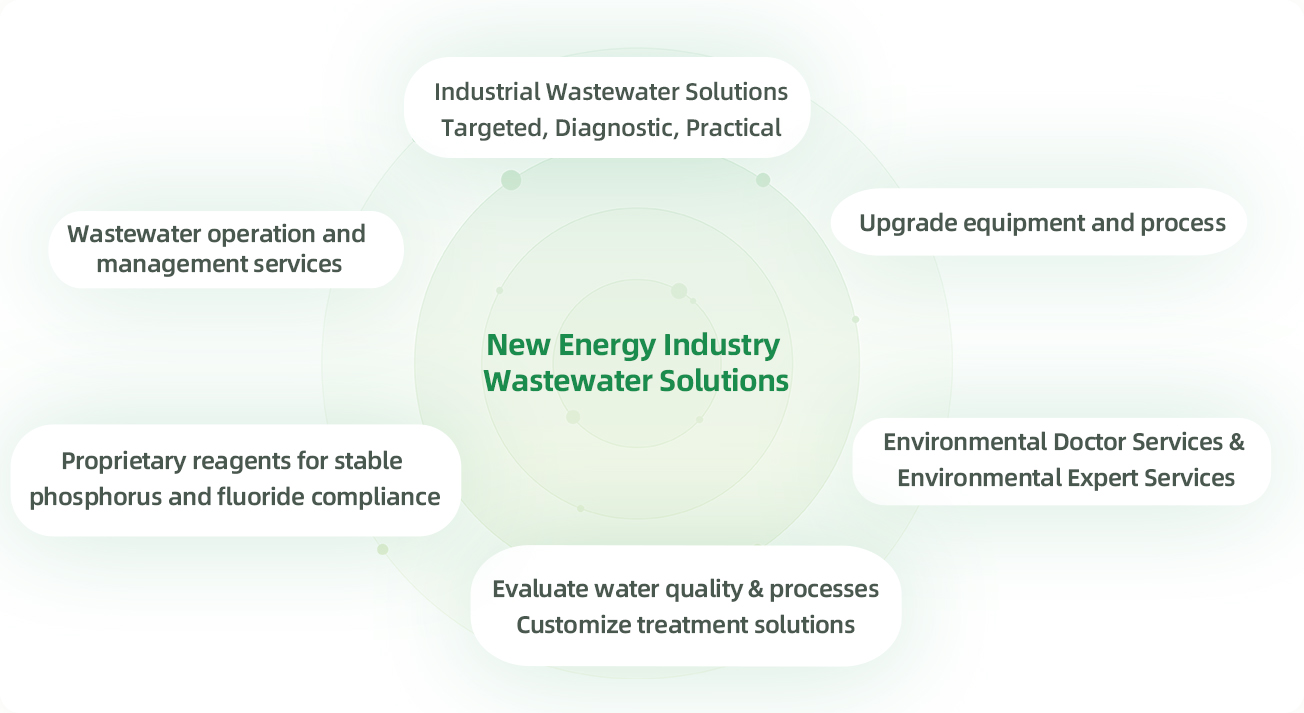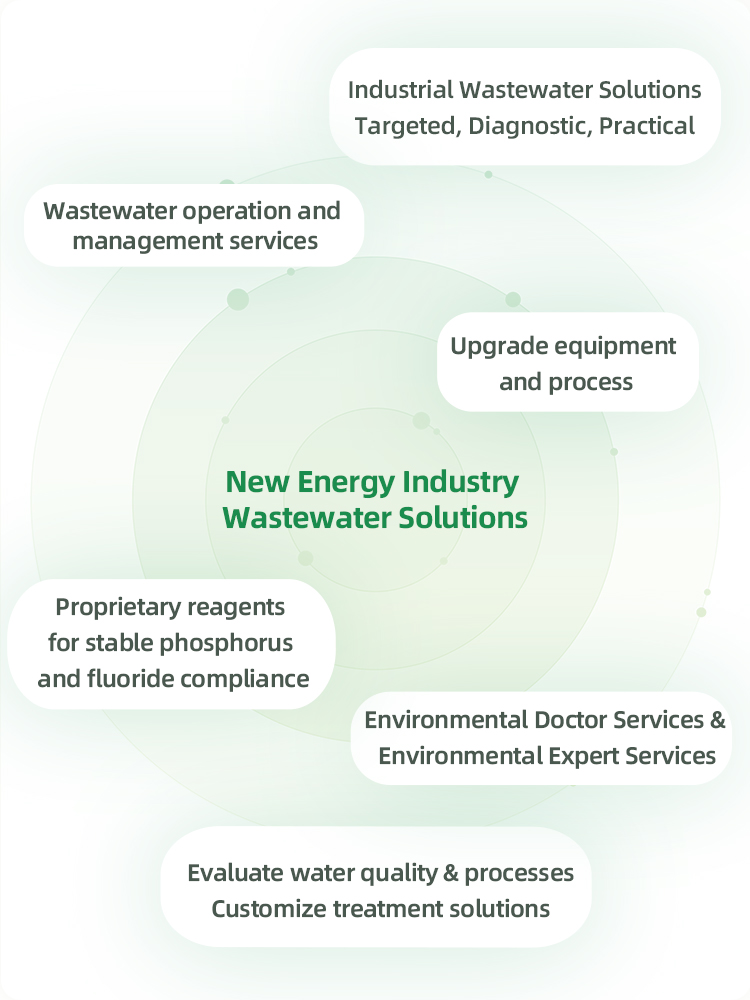 Peculiarity
Peculiarity
 The new energy industry wastewater typically has a complex composition, containing various chemical substances, including inorganic salts, organic compounds, heavy metal ions, etc.
The new energy industry wastewater typically has a complex composition, containing various chemical substances, including inorganic salts, organic compounds, heavy metal ions, etc.
 Inorganic salts mainly include sulphates, nitrates, etc.
Inorganic salts mainly include sulphates, nitrates, etc.
 Organic compounds commonly include alcohols, esters, ketones, etc.
Organic compounds commonly include alcohols, esters, ketones, etc.
 Heavy metal ions such as nickel, cobalt, and manganese contribute to the strong corrosiveness of the wastewater, and the wastewater quality can vary significantly depending on the specific production processes involved.
Heavy metal ions such as nickel, cobalt, and manganese contribute to the strong corrosiveness of the wastewater, and the wastewater quality can vary significantly depending on the specific production processes involved.
 Highly toxic, containing multiple heavy metals, which are discharged periodically with poor continuity.
Highly toxic, containing multiple heavy metals, which are discharged periodically with poor continuity.
 The influent organic matter includes polyethylene glycol, binders, and graphite, resulting in poor biodegradability and high salinity.
The influent organic matter includes polyethylene glycol, binders, and graphite, resulting in poor biodegradability and high salinity.
 The wastewater contains phosphorus pollutants such as orthophosphate, hypophosphite, and organic phosphorus, along with fluoride ions.
The wastewater contains phosphorus pollutants such as orthophosphate, hypophosphite, and organic phosphorus, along with fluoride ions.
 After pretreatment for fluoride and phosphorus removal, inorganic content in the wastewater remains high.
After pretreatment for fluoride and phosphorus removal, inorganic content in the wastewater remains high.
 Ammonia water and nitric acid are used in the production process, leading to elevated ammonia nitrogen and total nitrogen levels.
Ammonia water and nitric acid are used in the production process, leading to elevated ammonia nitrogen and total nitrogen levels.  Q&A.
Q&A.
 Significant pH fluctuations, with predominant challenges during the neutralization process (e.g., calcium scaling).
Significant pH fluctuations, with predominant challenges during the neutralization process (e.g., calcium scaling).
 High treatment cost due to the application of multiple chemical agents.
High treatment cost due to the application of multiple chemical agents.
 Unstable compliance with discharge standards for total phosphorus and fluoride.
Unstable compliance with discharge standards for total phosphorus and fluoride.  Solution
Solution


 Case
Case